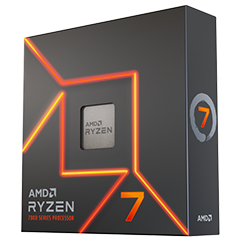In the world of server management and virtualization, Proxmox VE (Virtual Environment) has carved out a significant niche for itself. For those who haven’t encountered it before, Proxmox is an open-source virtualization management platform that has been steadily gaining traction. Its combination of powerful features, flexibility, and cost-effectiveness makes it a strong choice for both home lab enthusiasts and enterprise-level deployments. But what makes Proxmox stand out? Why would anyone choose it over the myriad of other virtualization solutions available on the market? Let’s dive into the details, especially for homelab enthusiasts such as myself.
What is Proxmox VE?
Proxmox VE is a Type 1 hypervisor, which means it runs directly on the hardware rather than on an operating system. It’s built on Debian Linux, utilizing the KVM (Kernel-based Virtual Machine) for full virtualization and LXC (Linux Containers) for containerization. Essentially, it allows you to create and manage both virtual machines (VMs) and Linux containers (CTs) with relative ease. Unlike some of its competitors, Proxmox is open-source, which means you don’t need to worry about licensing costs or vendor lock-in. This also means you have access to the full source code, which can be a big deal if you have specialized requirements. All of these strong points make it a popular choice in the homelab community.
Why Use Proxmox?
There are quite a few reasons why Proxmox is gaining popularity, especially among the technically inclined crowd.
Ease of Use and Flexibility
One of the big selling points of Proxmox is its user interface. The web-based GUI is surprisingly intuitive for a virtualization platform, providing a clean and straightforward way to manage your virtual environment. While there is a learning curve, as with any technical software, Proxmox’s interface makes the process of spinning up VMs or containers much less daunting than you might expect. You don’t need to be a Linux guru to get things up and running, although some command-line knowledge will certainly help you get the most out of it. The flexibility is another major strength. You can manage both VMs and containers side by side, allowing for a mixed environment that can serve different needs efficiently. For example, containers can be used for lightweight, Linux-based tasks, while VMs can handle more resource-intensive or Windows-based applications. This combination of KVM and LXC in a single platform is not something you see in many other offerings.
Open-Source and Free
Proxmox being open-source is a significant advantage, particularly for small businesses or individual users who are wary of incurring additional costs. The software is completely free to download and use, and while there is a subscription model available, it’s primarily for support and access to the Enterprise repository. The base functionality is fully available to all users, which means that even without a subscription, you’re not missing out on any of the core features. This makes it great for homelab use.
Advanced Features Out of the Box
When it comes to features, Proxmox packs a lot right from the start. For example, it supports live migration, high availability clustering, and backups and snapshots. The fact that all these are included without requiring additional add-ons or plugins is a big plus. The live migration allows you to move running VMs from one physical host to another without downtime, which is a feature often only found in more expensive solutions. High availability clustering makes it easier to set up a fault-tolerant system, which can be critical for businesses that can’t afford downtime. Proxmox also integrates with Ceph, a distributed storage system that provides scalability and redundancy, which is particularly useful for large-scale deployments. You get advanced networking options, such as VLAN tagging, bonding, and the ability to manage complex network setups directly from the interface. The ability to use ZFS as a storage backend with features like deduplication and compression is another powerful option that many admins will appreciate.
Backup and Restore Capabilities
Backups are essential in any virtual environment, and Proxmox makes them relatively easy. You can schedule backups to run automatically and configure retention policies to ensure you aren’t consuming more storage than necessary. It supports various storage types, including NFS, iSCSI, and local disks, so you have a lot of flexibility in how and where your backups are stored. The backup process is quite fast, and because Proxmox uses QEMU’s native snapshot capabilities, it’s very efficient in terms of both time and storage space.
Community and Support
While Proxmox does offer a commercial support subscription, there’s also a very active community of users who are more than willing to help newcomers. The forums are bustling with activity, and there’s no shortage of guides and how-tos scattered across the web. This community support can often fill in the gaps that might exist if you choose not to purchase a support subscription. The documentation provided for Proxmox is also pretty thorough, which is always a bonus when you’re trying to get a system up and running or troubleshoot an issue.
Who Should Use Proxmox?
Now, Proxmox isn’t necessarily for everyone. If you’re looking for a plug-and-play solution with extensive commercial support, you might find VMware or Hyper-V more to your liking. But if you’re comfortable with Linux or want a powerful, flexible solution that doesn’t lock you into a vendor ecosystem, Proxmox is worth considering.
It’s particularly appealing for small to medium-sized businesses, educational institutions, and even home lab users who are looking to get a lot of value without a significant financial investment. Proxmox is also a great fit for anyone who likes the idea of having full control over their virtualization environment, with no hidden costs or proprietary restrictions.
A Few Drawbacks to Keep in Mind
Of course, it’s not all sunshine and rainbows. Proxmox has its limitations. For example, while the web GUI is quite user-friendly, it’s not quite as polished or feature-rich as some commercial alternatives. Additionally, if you do need professional support, the costs can add up, especially if you’re running a large deployment.
Another minor downside is that, while Proxmox has a good range of features, it can be somewhat overwhelming for beginners. The documentation is comprehensive, but it does assume a certain level of technical knowledge. For those just dipping their toes into virtualization, the learning curve might be a bit steep.
Final Thoughts
Overall, Proxmox VE is a robust, flexible, and cost-effective virtualization platform. It’s packed with features that cater to a wide range of needs, from simple home lab setups to complex, large-scale environments. The fact that it’s open-source, with no mandatory licensing costs, is a massive plus, and its community support is an excellent resource for those who need it. It might not be the best fit for everyone, particularly those who need extensive professional support or a more beginner-friendly interface, but for those willing to put in the time to learn, Proxmox is a powerful tool that’s hard to beat.
As an affiliate, we earn commissions from qualifying purchases using our links or coupon codes.


